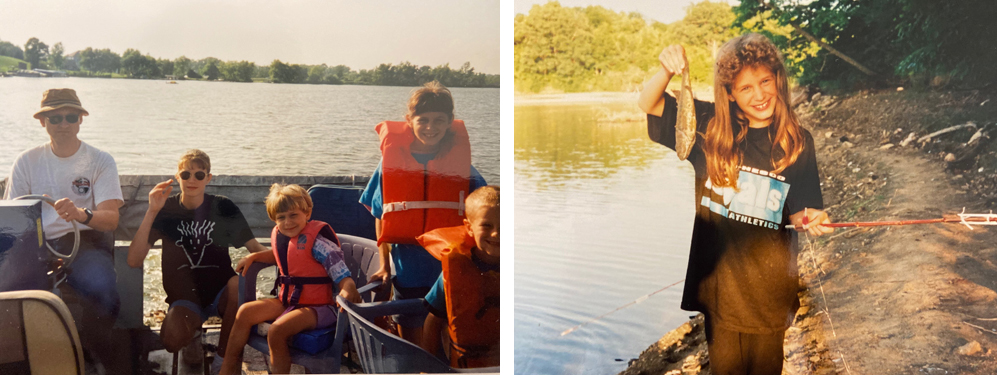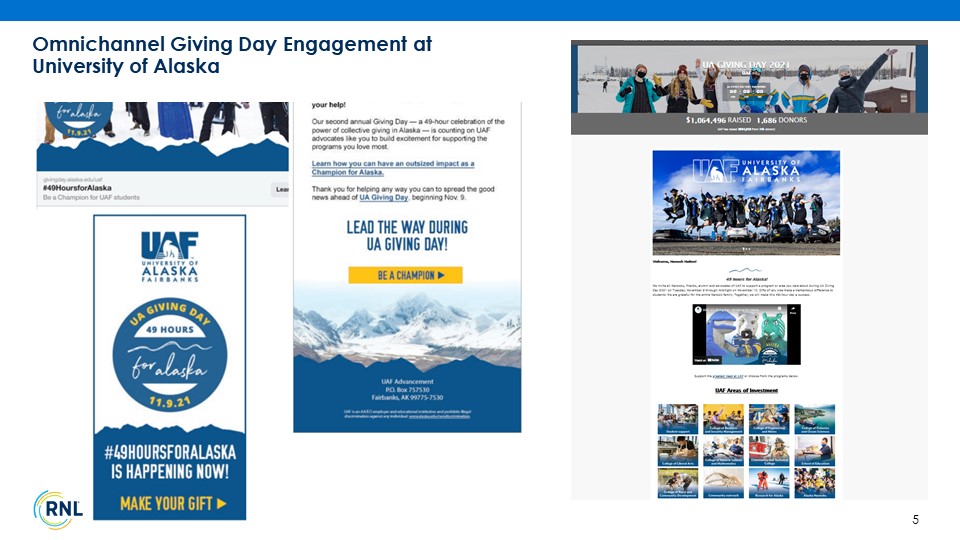fundraising
How to Catch New Donors by Going Where the Fish Are
If you’ve heard me talk about annual giving before you’ve probably heard me describe it as “casting the big net.” I like the idea that we send our large scale, omnichannel direct marketing messages to the masses and hope we can bring in as many fish (donors) as possible. It’s an apt metaphor, but I now wonder if the “big net” method, just like in real fishing, is sustainable or the wisest way to use our resources—particularly when it comes to acquiring first-time donors.
If I’m going to consider a smarter way of fishing, I’m of course going to have to look to the best lifelong fishing expert I know—my dad, Dave Robinson. As far back as I can remember, on warm summer evenings my three siblings and I would get doused in bug spray and load up in the van to head to the small lake nearest to our rural Iowa home to fish. Sometimes we’d actually bait our hooks and patiently fish, but more often than not we’d mess around on the shore or go built stick forts in the timber. My father however would stand steadfast at the edge of the water, switching from worms to lures, quietly casting and reeling as the sun sank low in the sky and the fireflies emerged. To this day, he and my mom get out on the lake as often as they possibly can.

So, here’s my attempt to distill the Dave Robinson universe of fishing knowledge in three points, and how I think these lessons apply to our work in bringing aboard new donors.
Casting a big net should be done with careful strategy to acquire new donors
The first step is to go where the fish are (and be prepared to lose a lure or two). While my dad is an infinitely patient fisherman, he understands when a new spot is necessary and where to move to based on the type of fish you’re looking to catch. Open water or near the shore is great for little bluegill or sunfish but if you want the big guys like bass, you’re probably going to have to get closer to the logs or other hiding spots. Fishing in these spots increase the risk of losing a lure or a line to a snag, but that often becomes worth it when landing a whopper.
Like a lake full of fish, our databases are full of potential donors. For some organizations, possibly tens of thousands of them. Casting our asks at as many as possible or randomly into the mix will yield us some results, but we have to use our knowledge of donors and their habits to increase our chances of success.
This is where tools like data modeling and data enrichment come in. First, making the investment to clean and refresh our data regularly makes sure our messages are reaching the right people. Doing this often for a full database is a massive investment and cost prohibitive for many organizations, but breaking it into smaller pools (see what I did there?) and setting them up on a rotating schedule for maintenance will help keep things accurate while minimizing spend.
This pool strategy works even better if you are using data modeling to sort your prospects. Again investing in the initial work and testing to create and prove the models can feel painful—like lost lures, hooks, and bobbers—but the long term health of your donor pipeline will soon make it worth it. And, once you’ve identified your top groups, you can prioritize them for your research, increasing the ROI on both pieces.
Donors also have prime fishing hours, and knowing when to cast is crucial
I don’t think it’s some sort of secret to know that the cool of early morning and quiet of dusk are the prime times for lake fishing. I think we can apply the same logic that tells us your high-noon hook is going to come back empty when we’re heavily targeting new donors. There are times that are just better to seek new donors.
There are some obvious points like calendar year end and Giving Tuesday when our societal traditions lend themselves to charitable behavior. We should also be building in other points that are especially attractive to our new donor audience. Giving days work very well for bringing on new donors as they create a level of urgency and feeling of being a part of something greater.
Understanding days that are uniquely important to your institution like Founder’s Days, tradition-specific days, and other celebrations of purpose like Doctor’s Day or Women’s History Month that might allow for messaging and strategy that increase the likelihood of support. You can also raise the profile and feeling of good will toward your organization on days like big tournament appearances, scientific breakthroughs, or notable awards.
You probably can’t message to your acquisition groups all year long, but you can definitely target your efforts with meaningful touchpoints. And the great thing about fundraising is that we have so many tools to attract donors, including low-cost methods like social media and digital advertising, which are pretty underutilized right now, in my opinion.

You have to use the right “bait” to get donors to bite
In fishing, the right bait makes a big difference. Some fish want live bait only and will blatantly ignore anything rubber, metal, or plastic, while others will jump at a spoon lure. When it comes to creating a plan that will appeal to new donors, understanding what it is about your mission and organization that motivates them is key.
A “one-size-fits-all” approach will rarely work. At RNL we see that moving more toward specific funds and causes, utilizing peer-to-peer or volunteer outreach, segmenting messages based on specific affinities like student groups or shared backgrounds, and tangible, focused impact reporting with meaningful storytelling are what brings a new donor into the fold. It’s about building trust and confidence that their gift to you makes a difference and was used as intended. It’s for this reason that crowdfunding campaigns and tools can be so powerful in this space. When used wisely they connect a donor directly with a project or recipient and if managed and stewarded well can begin a lifelong tradition of support.
Let’s get fishing with real strategy that can catch the passion of new donors to give
While building and executing cost-effective strategies that encourage the generosity of new donors and ensure the fiscal strength and longevity of our organizations is obviously far more important than a relaxing time at the lake, I think the lessons I learned those summer evenings translate pretty well to the daunting task of securing support for our missions. Reach out to us and we’ll set up a time to talk about finding your best pools of donors and building a donor pipeline that’s always stocked.
And who knows, if you are able to apply some of these tips to your own work, it might just make acquisition a little more like a relaxing day at the lake.
Talk with our fundraising experts
Let’s talk about how you can increase donor engagement and strengthen your donor pipeline. Ask for a free consultation with our experts.
